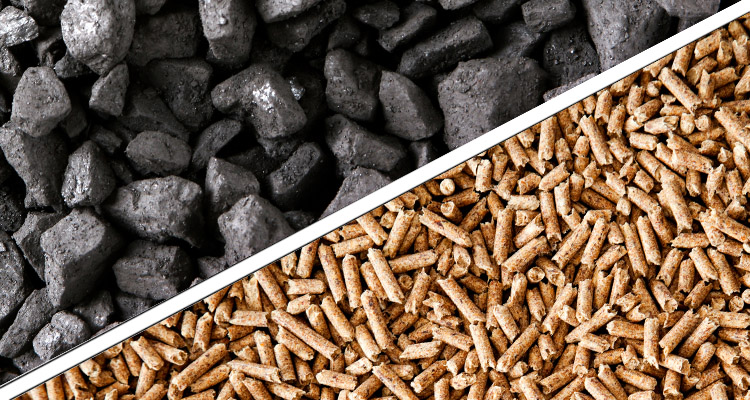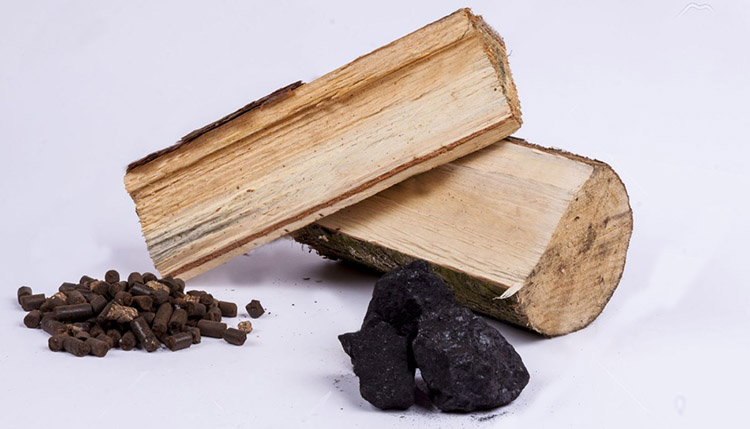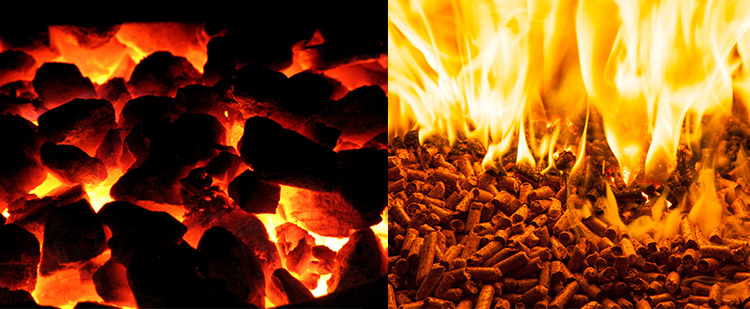
Biomass pellet is a new type of renewable energy which has been considered as a popular substitute of fossil fuels, such as coal. It has been widely applied as the main fuel in multiple industries such as central heating system, residential house heating, industrial power generation, cooking and so on. With the fast growing needs of biomass pellets, there are thousands of biomass pellet plants has been established around the world.
Coal is the most common solid combustible mineral which has been one of the main energy sources for human since eighteen century. In the latest centuries, coal has been called as the black gold. But with the increasing focus on environment pollution problem and the non-renewal of mineral resources, the price of coal keeps dropping in twenty-one century. But we have to know that, coal will still be one of the indispensable fuel for our daily production requirements for many more years.
Recent years, Many biomass pellet manufacturers told us the biomass pellets maintain many advantages such as high combustion efficiency, environment friendly, cost efficiency, easy to transport and so on. But, exactly how efficiency biomass pellets are? In the following article, we will show you the detail information of biomass pellet and coal performance comparison.

The Comparison of Combustion Performance of Biomass Pellet & Coal
Theoretically speaking, the thermal value of biomass pellets is 10% lower than the thermal value of coal. But in actually working situation, biomass pellets can be fully burned, and on the contrary, coal normally can not be fully burned, there are always 10%-15% combustible components in the combustion residues of coal. Therefore, in actual using situation, the thermal value of biomass pellet and coal are equal.
The ignition time of biomass pellets is much lower than coal. Biomass pellets is made of biomass materials such as wood shavings, wheat straw, etc. Coal is a kind of combustible organic rocks. Biomass pellets are much easier to ignite than coal, which means the start up time of the boiler is shortened by using biomass pellets.
The solid waste of biomass pellets is much lower than the solid waste of coal, which lower the slag discharge fee and the pollution of the environment. The solid waste of biomass pellets are ashes, the weight of biomass pellet solid wastes are about 0.4%-7% of the total biomass pellet weight. The solid waste of coal is the mixture of ash, alkali and residual coal, the weight of coal solid wastes are about25%-40% of the total coal weight.
Coal is one of the main sources of pollution to the atmosphere. There are a large quantity of granular carbon and toxic corrosive gas such as SO2 and CO. And the corrosive gas will cause the corrosion problem of the boilers, too. The main component of biomass pellets is C-H organism, there are no granular carbon in the smoke from burning biomass pellets. The smoke from burning biomass pellets are mainly C-H volatile gas, the discharge of SO2 and CO is nearly zero. The smoke color from burning biomass pellets is lower than Ringelman emittance Grade one. Using biomass pellets can significantly reduce the carbon dioxide emissions which helps protect the environment. Biomass pellets is known as “the clean fuel” around the world.
Using biomass pellets as the fuel of industrial boilers is cheaper than using coal. Moreover, it can also save time by using biomass pellets. Take a 0.5 ton boiler as an example, if we use biomass pellets as the fuel, the cost is 11% lower than the cost of using coal, and the time is 34% lower than the time of using coal.
The continuous combustion time of biomass pellets is 8-10 times compare to the loose biomass materials, which is definitely enough for the continuous combustion of industrial boilers.

The Test of Economic Contrast Between Biomass Pellet And Other Fuels
In order to confirm the economic and combustion performance of biomass pellets, we have compare the environmental protection property, heat value, boiler thermal efficiency, fuel consumption quantity, fuel price and operation cost of biomass pellets and other fuels. The boiler we used for the test is a one ton boiler, and the fuel price and operation cost is based on Chinese market. The result of this test has been placed in the following table. Hopefully, this contrast can help you get a visual understanding of biomass pellet fuel.
| Fuel | environmental protection property | heat value | boiler thermal efficiency | consumption quantity | price | operation cost |
| coal | heavy pollution | 5000kcal/kg | 65% | 185kg/h | ¥1.00/kg | ¥185/h |
| heavy oil | heavy pollution | 8000kcal/kg | 85% | 88.8kg/h | ¥4.70/kg | ¥417/h |
| diesel | polluted | 102000kcal/kg | 85% | 69kg/h | ¥7.20/kg | ¥496.8/h |
| natural gas | pollution free | 8000kcal/m² | 86% | 87kg/m³ | ¥4.50/m³ | ¥391.5/h |
| electric | pollution free | 860kcal/kwh | 95% | 734kwh | ¥0.80/kwh | ¥587.2/h |
| CWM | low pollution | 4060kcal/kg | 82% | 180kg/h | ¥1.20/kg | ¥216/h |
| biomass pellet | pollution free | 4200kcal/kg | 81% | 178kg/h | ¥1.10/kg | ¥195/h |
If you want to know the operation cost of different fuels, just use the fuel price of your country, then you can calculate the operation cost by using different fuels, and find out if biomass pellet is the most cost efficiency and environment friendly choice for you.
